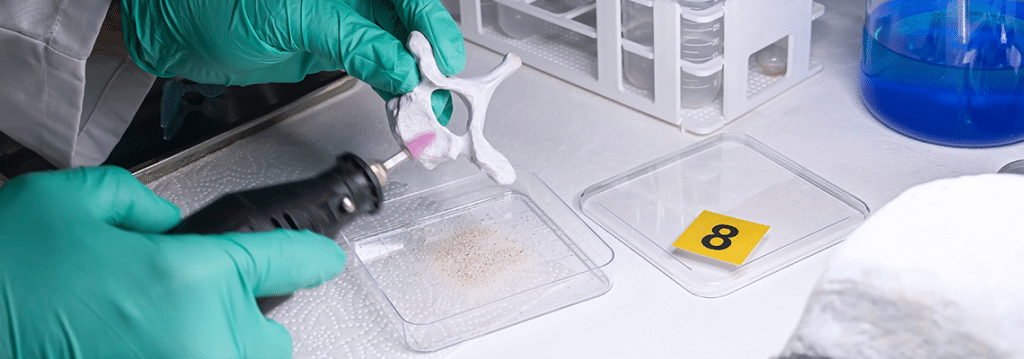ISHI 2019 PREVIEW: Challenging genetic samples & next-gen technologies
August 27, 2019
The International Symposium on Human Identification is right around the corner. As the largest annual meeting focused on DNA forensics, ISHI is essential attendance for InnoGenomics staff.
This year, we’re interested in hearing from the experts on the extraction of genetic material from mixtures and other challenging samples. We’re also eager for insights on how labs can economically embrace new technologies and methods—including massive parallel sequencing, rapid DNA analysis, and genetic genealogy.
Here we highlight some of the panels that piqued our interest.
Mixture Analysis and Other Challenging Samples
All victims deserve justice. And all of the dead deserve to be named. So what do you do when your lab’s DNA forensics processes fall short? ISHI 2019 features panelists with a variety of solutions.
- The International Commission on Missing Persons has refined DNA extraction protocols for challenging cases, such as those involving older skeletonized remains. And they’ve done so by testing tens of thousands of samples. ICMP’s Head of DNA Laboratories Division René Huel will give an overview of this topic on Tuesday.
- Burn victims are among the most difficult types of remains to identify. In the 2018 Camp Fire, the most deadly in California history, rapid DNA analysis played a major role in victim identification. On Wednesday, Sacramento County Coroner Kimberly Gin and ANDE Founder Richard Selden will review lessons learned.
- We all know the role that genealogy played in the arrest of the Golden State Killer, but do you about the applications in victim identification? In this Tuesday session, Colleen Fitzpatrick, PhD, widely recognized as the founder of modern forensic genealogy, will present with her DNA Doe Project Co-founder Margaret Press on their success with degraded, low-input, and highly contaminated samples.
Next-Gen Sequencing and other New Technology
We all want to keep up with the rapidly advancing field of DNA forensics. But how can we do it in a way that aligns with our current budget—or justifies the expense? These panels may have the answer.
- On Tuesday, an overview of the future of forensics will include using the “microbial clock of death” to estimate post-mortem interval, the controversial use of public genetic databases in solving crimes, and more. Highly recognized experts will discuss up-and-coming forensic tools, as well as the scientific, technological, investigative, ethical, and legal barriers to adopting them.
- This year, the FBI took a historic step by approving the first NGS systems for use with the NDIS. InnoGenomics believes this will lead to more-efficient labs, better recovery of genetic data, and swifter justice. Get the lowdown on all the updates to both NDIS and CODIS in a Tuesday session with FBI CODIS Unit NDIS Program Manager Dr. Douglas Hares.
- If your lab is pursuing the adoption of rapid DNA, this Wednesday session is a must. Thomas Callaghan was the first CODIS Unit Chief and now serves as the Senior Biometric Scientist for the FBI Laboratory’s Biometric Analysis Section. He’ll review the FBI’s Booking Station Rapid DNA Pilot, as well as give an overview of non-CODIS crime scene Rapid DNA applications.
Other Hot Topics
To hear about the latest techniques in automating lab workflows, sperm extraction, and mixture analysis, chat us up at poster #28 at the Wednesday poster session, from 3:30-5:30pm. Or visit InnoGenomics Technologies’ booth (#199) at any time during exhibition hall hours.
To be notified about InnoGenomics’ upcoming validation publications

